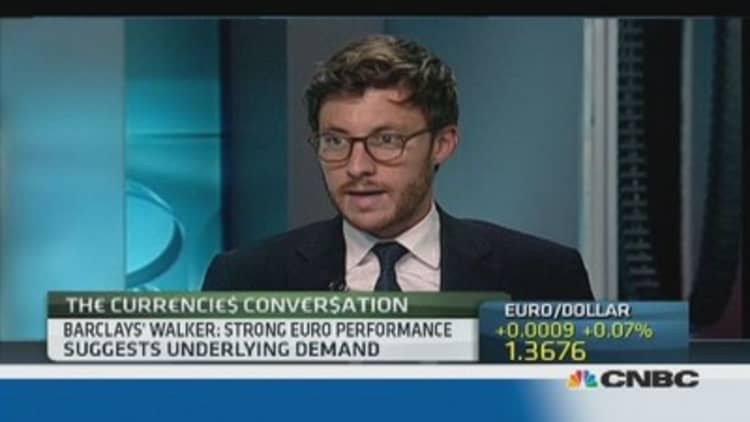Trading at a four-year low and suffering its worst week since last June, the Canadian dollar has come under pressure against a basket of G10 currencies -- and strategists are warning this could only get worse as Canada's economy falters.
The Canadian dollar (CAD) traded at $1.0895 on Monday morning - levels not seen since September 2009 - and has fallen 2.37 percent already since the start of January.
Chris Walker, foreign-exchange strategist at Barclays told CNBC Monday that the story in Canada is compelling for currency traders, and is expecting the Canadian dollar to fall lower.
(Read More: Canada's red hot housing market teeters on the brink)
"All of the stars have aligned quite nicely," he said. "We've had evidence of a lot more slack in the domestic economy than we previously expected, that's feeding through into low inflation."
Consumer prices in the country remain weak with a year-on-year rise of 0.9 percent in November -- the seventh time in the last 13 months that it fell below 1 percent. Adding to the mix is the unemployment rate, which is actually getting worse rather than better, according to Statistics Canada. Data on Friday showed unemployment rising by 0.3 percentage points to 7.2 percent as more people searched for work.
More figures last week showed Canada's trade deficit stood at $940 million in November, far worse than expected in a Reuters poll of analysts. Meanwhile, next-door neighbor the U.S. is experiencing a promising change in its trade balance, with its deficit falling to its lowest level in four years in November as exports hit a record high.
(Read More: Fitch rings warning bell on Canadian banks)
With the U.S. showing signs of recovery, and enjoying a shale boom, analysts are growing concerned over how this could affect Canada's exports. The U.S. has embraced shale gas production, which has led to a fall in domestic gas prices and making it possible that the country could achieve energy independence in oil and gas by 2035, according to the International Energy Agency.
Walker said that the data suggest that there is lower structural demand for Canadian exports given the shale gas revolution in the U.S. If less products are bought from Canada, this negates the need to hold the Canadian dollar, accentuating any fall in price.

"We think (CAD's) got further legs to go," Walker said. "In the short term it's come so far, you look at currency performance across the G10 - it's come a long way already you could have a retracement, but in the medium term we think it's got legs."
(Read More: Goldman Sachs warns on 'large correction' in Canada housing)
Meanwhile, Bank of Canada Governor Stephen Poloz has remained dovish in a recent interview with Canada's CBC Television network, indicating that benchmark interest rates could remain low despite yields on sovereign bonds creeping higher.
Sebastien Galy, senior currency strategist at SocGen believes "significant deflationary pressures" will percolate through the Canadian economy, helping the central bank to stay on hold for longer than expected.
"The worsening picture is linked in good part to weaker trade with the U.S., as Canada imports more," he said in a research note last week, adding that the Canadian dollar is simply too high at a time when the country's oil trades at a significant discount to a low WTI benchmark.
By CNBC.com's Matt Clinch. Follow him on Twitter @mattclinch81


